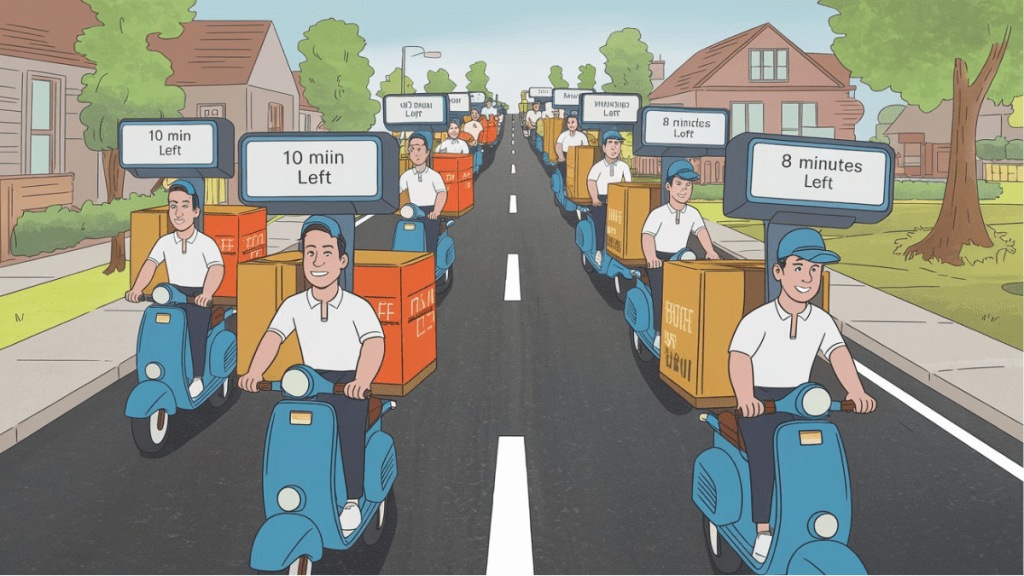When Swiggy pulled the plug on its Genie service earlier this month, a niche but growing segment of hyperlocal logistics was thrown into a moment of reckoning. The company, under pressure to streamline costs, chose to shutter the ancillary courier business that once operated across more than 60 cities. Though never a core revenue engine, Genie symbolised Swiggy’s attempt to tap into the high-frequency intra-city logistics game. Now that it’s gone, rivals are moving swiftly to claim the space.
On May 8, Uber fired its first salvo with a cheeky social media post, “No Genie, No Problem. The magic is still alive with Uber Courier”. Uber Courier is a same-day delivery service that allows users to request a driver to deliver a package from one location to another. Now it is doubling down. The company has launched Courier XL, a new service to move bulkier packages (up to 750 kilograms) using 3- and 4-wheelers. “Courier XL is built in response to the growing demand from small businesses, local retailers, and households that need a trusted, tech-enabled solution for moving heavier or bulkier items,” says Shiva Shailendran, director, consumer & growth, Uber India & South Asia. “It expands the reach of Uber Courier from hyperlocal, lightweight deliveries to high-volume, high-capacity logistics.”
This isn’t just a line extension for Uber Courier, say experts; it’s a strategic wager on the segment’s potential. The company’s courier service grew over 50% year-on-year in 2024, with momentum picking up further in 2025. Shailendran adds, “Hyperlocal delivery in India is maturing into a scalable and sustainable opportunity.” While the space remains “volume-driven”, he says, Uber’s advantage lies in tech-driven efficiencies, multimodal fleets, and dynamic pricing.
Other players too are muscling in. Logistics startup Porter recently raised $200 million in a Series F funding round to expand into new cities, beef up its team and advance its technology. Porter operates in over 22 Indian cities and two international markets. Its focus on SME deliveries, relocations, and scheduled services makes it a leader in the segment.
Borzo, another fast-scaling player, says flexibility and smart fleet design will be its differentiators. “India’s hyperlocal delivery market is growing rapidly. While it’s often seen as a challenging, low-margin space, we believe it presents a promising opportunity,” says Alina Kisina, CEO, Borzo.
Borzo is leaning heavily into B2B partnerships. Partnerships with MSMEs, D2C brands, and even large Kirana stores seeking additional delivery support can contribute significant volumes, says the company. “To strike the right balance, we use dynamic pricing to remain equitable to customers while maintaining healthy operational margins. Delivery charges are based on distance traveled, but ultimately, consistent volume remains key to long-term profitability,” Kisina says.
There is significant headroom for growth, say experts. The number of hyperlocal startups in India has grown by 80% since 2014. The market is projected to grow at a CAGR of 14.4%, reaching a valuation of $5.18 trillion by 2030. “The businesses that succeed will be the ones that get the balance right between speed, service quality, affordability, and technology,” notes Somdutta Singh, CEO, Assiduus Global.
To that extent, Swiggy’s exit was more about internal reprioritisation than a flaw in the hyperlocal model, say experts. While food delivery has only two big players, Genie was in a crowded field. “This was the right move for Swiggy,” says Siddharth Subudhi, mobility policy expert. “Its losses nearly doubled this fiscal year despite revenue growth. It had to prioritise verticals with clearer margins.
Elusive profitability
Despite the potential, profitability remains elusive. “The hyperlocal courier segment in India is a high-growth but low-margin business,” points out Anand Ramanathan, partner at Deloitte India. “Delivering small-value items within tight timeframes in urban centers incurs high operational costs. Most players struggle to turn a profit even after large funding rounds.”
Companies are experimenting with dark stores, micro-warehousing, subscription models, and AI-led routing to ease operational burdens. “The winners will be those who integrate speed, service reliability, pricing and a strong tech stack,” Ramanathan says.
Meanwhile, Kisina notes that demand is surging across both metros and emerging towns. “We’re witnessing a significant shift in consumer behaviour, with customers placing a premium on speed, convenience, and reliability — qualities that hyperlocal services are designed to deliver,” she says, adding, “The demand is fragmented between B2B and on-demand deliveries, with B2B clearly driving the volume necessary for profitability.”
To compete effectively, Borzo has diversified its delivery stack. “We developed multiple delivery products: On-Demand Delivery (within 60 to 90 minutes), End-of-Day Delivery (delivered anytime during the day at the lowest cost), and Scheduled Delivery,” she says.
She adds that Borzo is investing in electric three-wheelers to reduce operating costs while supporting delivery partner earnings. “To build trust and enhance customer retention, we’ve also introduced a parcel compensation benefit of up to Rs 50,000 in case of loss or damage.”
But scaling in India comes with its own pain points. “Drivers can’t shoulder the vehicle upgrade costs alone,” Subudhi explains. “A potential growth lever lies in legalising dual-use of auto-rickshaws for deliveries. Government policy here can make or break scale.”
Growth constraints
Fragmented demand & supply: India’s urban sprawl creates hyper-localised demand pockets. Achieving consistent density of orders across these micro-markets is difficult.
Last-mile economics: Unlike food or grocery, hyperlocal courier AOVs are lower, yet the cost of last-mile delivery remains high. Drivers are often shared with ride-hailing or other gig work, affecting reliability and consistency
Competitive pricing pressure: The “freemium” mindset among Indian consumers makes it tough to pass on delivery costs, squeezing margins
Courtesy Milan Sharma, director, 35 North Ventures

